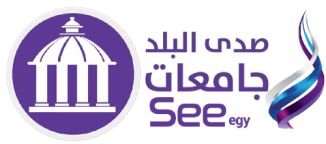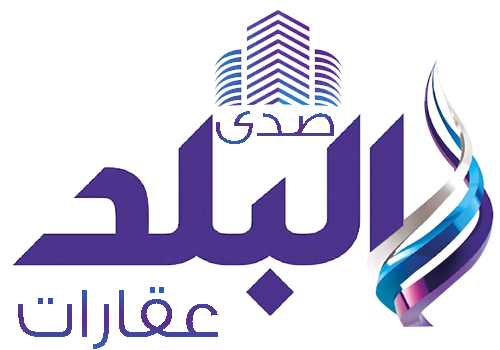On April 3–4, 2025, Samarkand will host a historic event: the first-ever Summit between the European Union and Central Asia. The meeting will be chaired by the President of Uzbekistan, Shavkat Mirziyoyev, and will include the participation of the leaders of Kazakhstan, Kyrgyzstan, Tajikistan, and Turkmenistan. The EU will be represented by European Council President Antonio Costa and European Commission President Ursula von der Leyen.
The Summit's agenda includes discussion of economic issues, which is of particular interest given the long-standing history of economic cooperation between Uzbekistan and European countries, as well as the new economic opportunities that may arise from the Summit's outcomes.
Trajectory of Uzbekistan–EU Cooperation
Cooperation between the EU and Uzbekistan began in the early years of Uzbekistan's independence. In April 1992, a Memorandum of Understanding was signed between the Government of Uzbekistan and the European Commission, and diplomatic relations with the EU were established in November 1994. Since 1995, the Embassy of Uzbekistan in Brussels has served as the Mission to the EU, and since 2011, the EU has maintained a diplomatic presence in Tashkent. A strong foundation for cooperation was established with the signing of the Partnership and Cooperation Agreement (PCA) in June 1996, which entered into force in 1999.
Uzbekistan's cooperation with the EU has significantly deepened with the onset of major reforms initiated by President Shavkat Mirziyoyev. In July 2017, Stefano Manservisi, Director-General for International Cooperation and Development of the European Commission, during his visit to Tashkent, stated that "the EU considers Uzbekistan a strategic partner."
The legal framework for relations has also expanded. Whereas previously the EU and Uzbekistan had granted each other most-favored-nation status under the PCA, in April 2021 the EU granted Uzbekistan GSP+ beneficiary status under the Generalized System of Preferences, and in 2022 the new Enhanced Partnership and Cooperation Agreement was initialed.
In recent years, trade and economic cooperation has intensified. Between 2017 and 2024, Uzbekistan's trade with EU countries increased 2.4 times from $2.6 billion to $6.4 billion, exports rose 3.6 times from $472.3 million to $1.7 billion, and imports grew 2.2 times from $2.2 billion to $4.7 billion. As a result, in 2024 the EU's share in Uzbekistan's foreign trade was 9.7% in total trade, 6.3% in exports, and 12% in imports, placing the EU third among Uzbekistan's trading partners after China and Russia.
It is also noteworthy that during the same period, from 2017 to 2024, the EU's share in Uzbekistan's total exports rose from 3.8% to 6.3%, reflecting the growing competitiveness of the Uzbek economy. A particularly striking comparison is between 2024 and 2023: trade turnover with the EU increased by 5.2% to $6.4 billion, while exports jumped by 26.9% to $1.7 billion, with imports remaining unchanged at $4.7 billion. This is a very positive trend for Uzbekistan, given that the EU, with a population of over 500 million, is one of the largest markets in the world.
Uzbekistan's accession to the group of GSP+ beneficiary countries has played a key role in increasing exports to the EU, granting duty-free access to approximately 6,200 tariff lines. The current utilization rate of GSP preferences in Uzbekistan is relatively high.
As a GSP+ beneficiary, Uzbekistan enjoys additional economic benefits through the full elimination of tariffs on two-thirds of the product lines covered by the system, which in turn promotes export growth and attracts further investment. GSP+ commitments in the area of sustainable development further reinforce Uzbekistan's position as a reliable economic partner.
The volume of imports from Uzbekistan covered by GSP+ preferences increased from €100 million in 2019 to €392 million in 2023. This significant growth demonstrates how the preferential system influences trade with the European Union.
The share of imports from Uzbekistan benefiting from GSP+ preferences stands at 59%. Particularly noteworthy is the preference utilization rate, which has reached 84%, indicating a high level of effective use of the benefits. This is associated with improved trade relations and a more active use of the opportunities offered by the GSP+.
The most active sectors benefiting from these preferences are textiles and garments, plastic products, and agricultural goods such as fruits, nuts, and vegetables.
In 2024, the bulk of Uzbekistan's exports to the EU consisted of chemical products (52.1%), as well as textiles, ferrous and non-ferrous metal products, mineral and food products (including vegetables, fruits, spices, nuts, etc.). Among EU countries, France ranked first in imports from Uzbekistan (47.2% of exports), followed by Lithuania (10%) and Latvia (6.9%).
Uzbekistan's imports from the EU significantly exceed exports, largely due to the structure of mutual trade and the country's need for technological modernization. EU countries account for about 16% of Uzbekistan's total imports of machinery, equipment, and transport vehicles. In 2024, these items, including aircraft, electrical products, instruments, and medical equipment, made up about 50% of imports from the EU.
Investment cooperation with EU countries has also developed rapidly in recent years. In 2024, the volume of foreign investment and loans from EU countries (including financial institutions of EU member states) increased by 77% and reached $4.1 billion (compared to $2.3 billion in 2023). The most active investors were Germany ($1.37 billion), the Netherlands ($1.05 billion), Cyprus ($858.9 million), the Czech Republic ($137.8 million), Italy ($99.8 million), and Sweden ($97.5 million). Currently, about 1,000 enterprises with EU capital operate in Uzbekistan, including 201 enterprises with German capital.
Prospects for the Development of Economic Cooperation
As for the expectations associated with the upcoming Summit in Samarkand, its outcomes could accelerate the development of economic cooperation between Uzbekistan and European countries along several key directions.
In terms of cooperation and investment, it is currently relevant to expand ties with leading EU investor countries to integrate Uzbekistan’s industrial sector into global value chains of major European multinational corporations. For instance, during the recent visit of the President of Uzbekistan to France, a Joint Program for Innovation and Industrial Partnership was adopted, which includes projects in critical raw material extraction and processing, energy, infrastructure, transport, and other sectors totaling €6.5 billion.
The most promising areas of cooperation and investment include energy, especially renewables, chemical, pharmaceutical, textile, and electrical industries; building materials production; agricultural processing; mining and mineral processing; and transport logistics.
Transport and logistics are also central to enhancing cooperation due to the geographic distance between Uzbekistan and Europe. Therefore, the development of effective logistics corridors is highly relevant, particularly the Trans-Caspian multimodal route, to improve access to European markets, considering existing constraints on routes via Russia. It is advisable to align these efforts with the goals of the European “Global Gateway” initiative, which aims to invest around $340 billion in infrastructure projects in developing countries by 2027.
Further growth in exports to the EU is expected under Uzbekistan’s GSP+ status. In particular, there is significant potential for increased exports of fresh and dried fruits, nuts, tomatoes, textiles (especially finished garments)and specific industrial goods. To better leverage GSP+ benefits, expanded EU technical assistance is needed to establish laboratories for certifying Uzbek exports in line with EU standards. Additionally, during Uzbekistan’s WTO accession talks, technical support from European experts would be highly beneficial.
The entry into force of the new Enhanced Partnership and Cooperation Agreement between Uzbekistan and the EU, which has already been initialed, should also be accelerated. This agreement provides for expanded cooperation in new areas and improved regulation of trade and economic relations. It outlines cooperation in key areas such as economic and investment partnership, energy, transport, environment and climate change, the digital economy, agriculture and rural development, employment and social affairs, as well as scientific research.
Another priority is the effective and targeted use of EU financial assistance under the 2021–2027 Uzbekistan–EU Development Program, which supports projects in areas like good governance, digital transformation, inclusive and green growth, and sustainable agro-food systems.
Attracting European companies to develop Uzbekistan’s tourism infrastructure, with consideration of EU tourist preferences, would also stimulate tourist flows from visa-exempt EU countries.
Conclusion
The range of priority areas for economic cooperation with the EU is quite broad, and deeper engagement could provide a powerful impetus for Uzbekistan’s economic development and modernization.
However, it is important to consider that the current geopolitical situation has created significant challenges for the European economy. This was recently confirmed by European Council President Antonio Costa, who said: “We live in a world of disorder and division, and for the European Union, the only solution is to strengthen cooperation in pursuit of peace and prosperity. In a multipolar world, more active and purposeful engagement is necessary. The first EU-Central Asia Summit will reinforce our commitment to working together for peace, security, and sustainable development.”
There is mutual interest in adopting mutually beneficial decisions, and this implies that the outcomes of the Summit will most favorably contribute to the development of economic cooperation between the countries of Europe and Central Asia, and in particular, Uzbekistan.
ObidKhakimov,
Director of the Center for Economic Research and Reforms














